Welcome to A Wild Green Heart. I'm glad you're here. This week's post is one of my monthly photo-diary reports from my most beloved place, Pomona Strand. This local, urban wild strip of land between river and canal has given me so much over the course of the last few years. She has held and supported me, patiently taught me, loved me and received my love. So sharing pieces of her beauty and wonder here feels like both a sacred duty and the most outrageous pleasure.
Snipe footprints in the frozen snow atop the icy marshes
It has felt quite difficult to visit Pomona this month. I was laid up for a week with an unpleasant throat infection. I was away for a long weekend at a beautiful gathering in East Sussex, presenting my Becoming Pomona work and hosting workshops. One of these was a writing workshop, where I gave various prompts to help participants respond to the event theme of friendship, through poetry, prose and letters. The other was a sublime conversation about befriending places, with Pomona and my encounters there as the central focus of what I offered, naturally.
From “Becoming Pomona” at Sparks
Since returning from that I've been quite heavily fatigued. However, in the times that I have managed to be with Pomona in recent weeks, I have been overwhelmingly struck by her ability to dramatically transform her appearance. Different weathers and light have changed her landscape in such profound ways, that I have not found her in anything like the same shape in any two visits.
Let's start in late December. If you're in the UK, you'll probably recall that we had four days running of fairly thick mist and fog. I found this particular weather an absolute delight to walk in. This joy was further increased at Pomona: the diminished visibility meant that the tall buildings and the construction sites that surround this precious place were all obscured, and they faded away as if into another realm entirely.
I pay scant attention to these buildings as it is, as my focus is usually on what is beneath, above, and immediately surrounding me. But inevitably they are in my eyeline most of the time. To have them shrouded in fog, while the natural colours close to me still fizzed and sang, was a great blessing.
Something about the misty conditions allowed the more muted browns to really pop into clarity when nearby, most notably these lovely teasels:
Teasels in the mist
Early January was very cold. My first visit of the year found the many pools and marshes at Pomona coated in ice. But it was a strange phenomenon. Clearly it had been present for a few days; but in places the water beneath had drained into the soil, leaving curious, delicate coverings of ice sometimes several inches above the grass and moss, as here:
The ice here is exactly as I found it
No sign of water at all beneath this one
As in the images above and below, there was also an abundance of ice patterns forming concentric circles.
I'm supposing this was created by the groundwater receding then refreezing several times; but this is just a guess. If anyone happens to know, please share your knowledge in the comments!
I found it both intriguing and beautiful. Pulling up a section revealed thick ridges of ice holding the delicate sheets together:
In the marshes, which lie in more exposed parts of Pomona, the water was uncovered and abundant.
Walking the marshes, I flushed three common snipe from their hiding places. I'm always reassured to see them still finding a winter home here at Pomona. Rather more surprising, a flock of a dozen or so rose-ringed parakeets flew over me, less than a metre above my head, chattering raucously as they did! There are flocks of these birds residing in various parks and woodlands around Manchester, but I rarely see any at Pomona, and when I do it's not usually more than two or three, which made this quite a striking encounter! Whenever I hear their squawks and squeaks in the winter months, I fancy they are venting pure outrage that they've been uprooted from there native Asian and sub-Saharan homelands, and are compelled to live out their days in climes that see snow and ice for part of the year! I have great sympathy for this outlook.
I made a quick visit the next day, too, after central Manchester received a light dusting of snow overnight.
This produced another transformation! From fog to concentric ice and now snow. It's hard to articulate just how different Pomona looks and feels each time the weather conditions change. I'm so captivated by her beauty, that these rapid, dramatic transformations leave me somewhat breathless. I struggle to find the words to express to her just how her wild beauty is every bit as potent, yet completely different. The poet in me feels challenged to do something about that: after all language is the primary gift that we humans can use to reciprocate with the rest of the natural world. But, to my shame, I find myself entirely lost for words all too often.
My next visit was a week later. More snow had fallen in the intervening days, then the temperature had dropped further. The canal was frozen over, something I always enjoy seeing (though with an element of sympathy for anyone living on a canal boat!)
Visiting my Ancestral Grounds, I felt it was high time to add some more natural items to my ritual circle. Each time I visit in the winter months, I leave generous handfuls of birdseed for my feathered kin to enjoy. It is always consumed. But this seems to have had the unforeseen consequence that some of the birds have been exploring my small circle, distributing the lighter items, and pecking at the fir cones and snail shells, meaning the circle had become tatty and a bit threadbare. I brought some pieces of wood and bark, and the fearsome jawbone of a pike I found at Pomona a couple of years ago. I added them to the circle, but couldn't tidy things up quite as I'd hoped to, due to everything being firmly frozen in place!
The day was icy cold, and while much of the snow had disappeared from the more exposed parts of Pomona, that which lay on top of the ice-covered pools and marshes was frozen in place. It was in these places that the footprints of snipe were clearly visible:
For those of you not familiar with snipe, they migrate to over-winter here in Britain. They dwell in the reedy marshes and damp undergrowth, feeding on small invertebrates such as larvae and worms. They are incredibly well camouflaged, and it is basically impossible to see them on the ground without the aid of thermal imaging technology, which I certainly do not possess. So seeing their tracks felt very special, as I suspect it may be as close as I ever get to seeing a snipe on the ground!
The other thing about their footprints is their simple charm. They are the archetypal bird prints as drawn by a child, and to see them through the frozen snow felt as strange and marvellous as falling into a picture made by a beloved youngster.
The sun came out for a while, bringing yet more transformations. The shadows made by the reeds in the frozen marshes were especially enchanting:
Before leaving, I felt compelled to walk to the far side of Magic Pool. The river, too, was frozen around its edges where it is shallow and lies over the thick mud.
As I took the above photograph, I was startled by a sudden movement from the corner of my eye. I looked up to see kingfisher flying from the river towards his favoured willows, in the middle, towards the back of the picture. I lost sight of him, but was delighted to have had this brief encounter. Last year I had to wait until June before I saw kingfisher at Pomona.
I made another visit to Pomona on 15th January, the one year anniversary of the devastation of all her growth by the men in blade-wielding tractors. I was there to witness it happen, as I shared in great detail last week. It felt important to remember that grief-filled day, and to make generous offerings to Pomona of words and birdseed and good wine.
I was met with yet another transformation! The temperature was unexpectedly warm for January, about 8 or 9°C, but with the sun shining brightly, it felt even warmer. I had dressed in far too many layers, and found myself sweating as I navigated Pomona’s marshes and brambles. Contrast this photo with the previous one of Magic Pool, and you'll get some small idea of just how outrageous Pomona’s transformations are!
The sky was blue, the river was still and reflective, the sun was unseasonably warm. It was hard to imagine the ice and snow of recent days. I didn't encounter any snipe, and found myself wondering whether they found the warmth of days like this harder than the penetrating cold. They come here from much colder climes, such as Scandinavia and Russia, over-winter, after all.
I decided to wander to the other end of Pomona, to the sacred place I know as her Womb, to make my final offerings. It is a space with fewer saplings and no marshes or reeds, but fiercely abundant in wildflowers.
Richly vegetated Womb walls
One final visit to tell you about. I needed to rest for several days after the lengthy journey back from East Sussex for Sparks, but finally made it out on Friday afternoon. It is always a joyful reunion with Pomona when I've been away.
The sun was out, but storm Éowyn was still blowing fierce gusts up the river and across Pomona. Despite several attempts, my candle wouldn't stay alight in its jar in the Ancestral Grounds.
Waves blowing upriver at Pomona
I decided to focus on speaking blessings instead, naming every species of bird and plant that I have encountered at Pomona and could recall as I walked around, and sprinkling generous handfuls of birdseed in strategic places.
The marshes looked splendid in the low afternoon sunlight, though their water level had significantly receded since my last visit, as you can see here:
There was no sign of any snipe, and I found myself wondering if they've already flown back north to their breeding territories after the unseasonable warmth of last week. I realised I had no idea when they usually migrate back, given that their habitat was so brutally destroyed in mid-winter last year. A little research told me it is most likely in February.
Pomona was transformed once again on this final January wander, though not as dramatically as each of this month’s earlier visits. I'll leave you with one final image, showing just how much colour remains at Pomona - and in many other wild spaces - all year round. When the sun is out, these willow saplings really do glow with their own inner fire. A welcome warmth on such a blustery day!
I hope you've enjoyed another glimpse of Pomona’s rich and wild beauty. I'll post another photo-diary report at the end of February. Meanwhile, I'd love to hear about your encounters in wild spaces in the comments!
Thanks for reading, and stay wild!

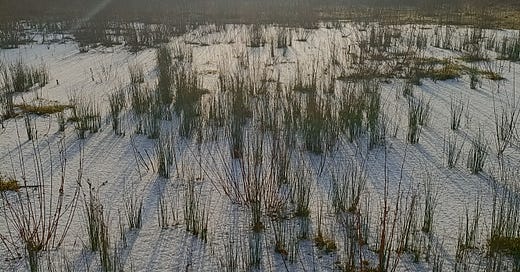


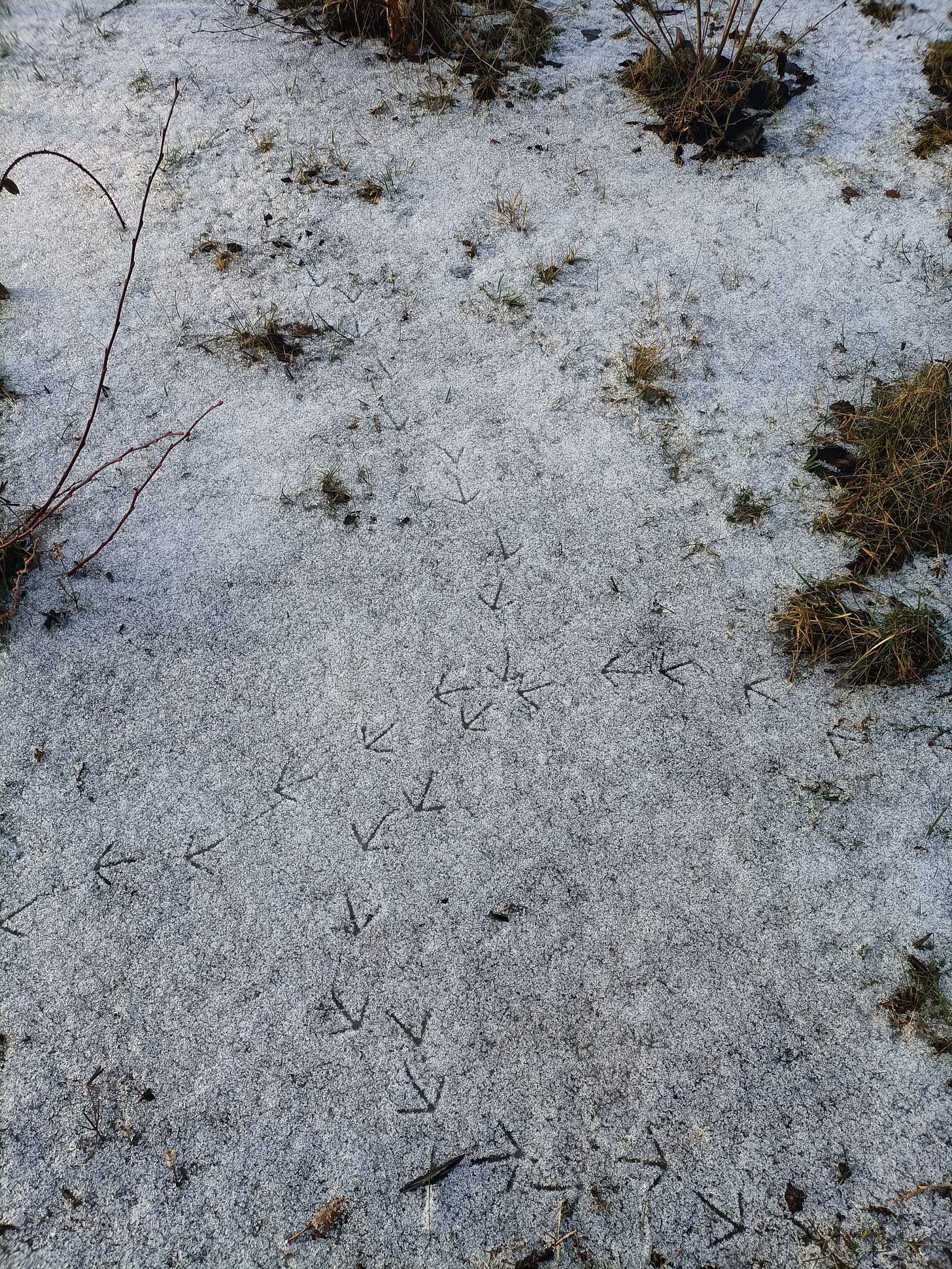
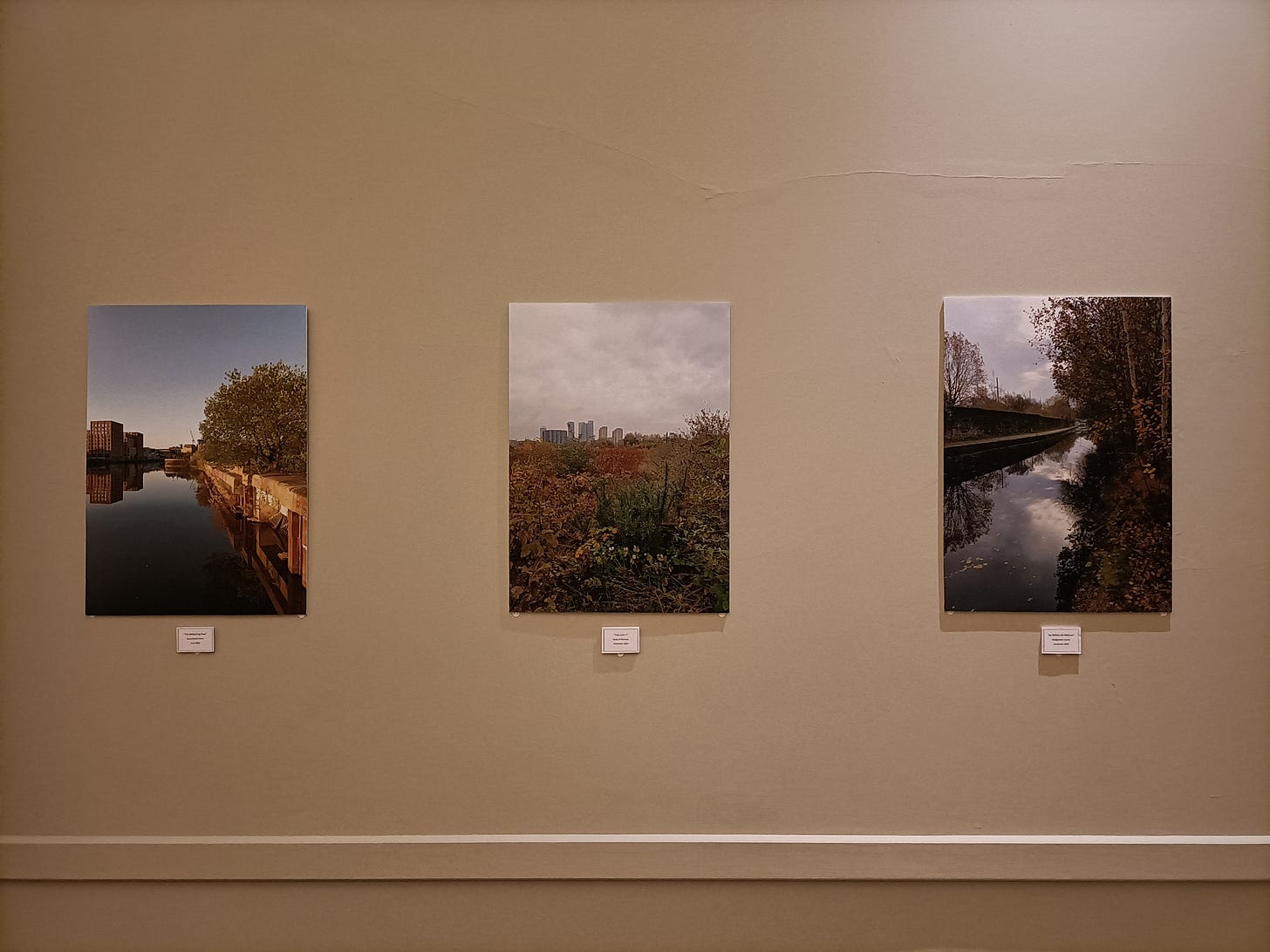
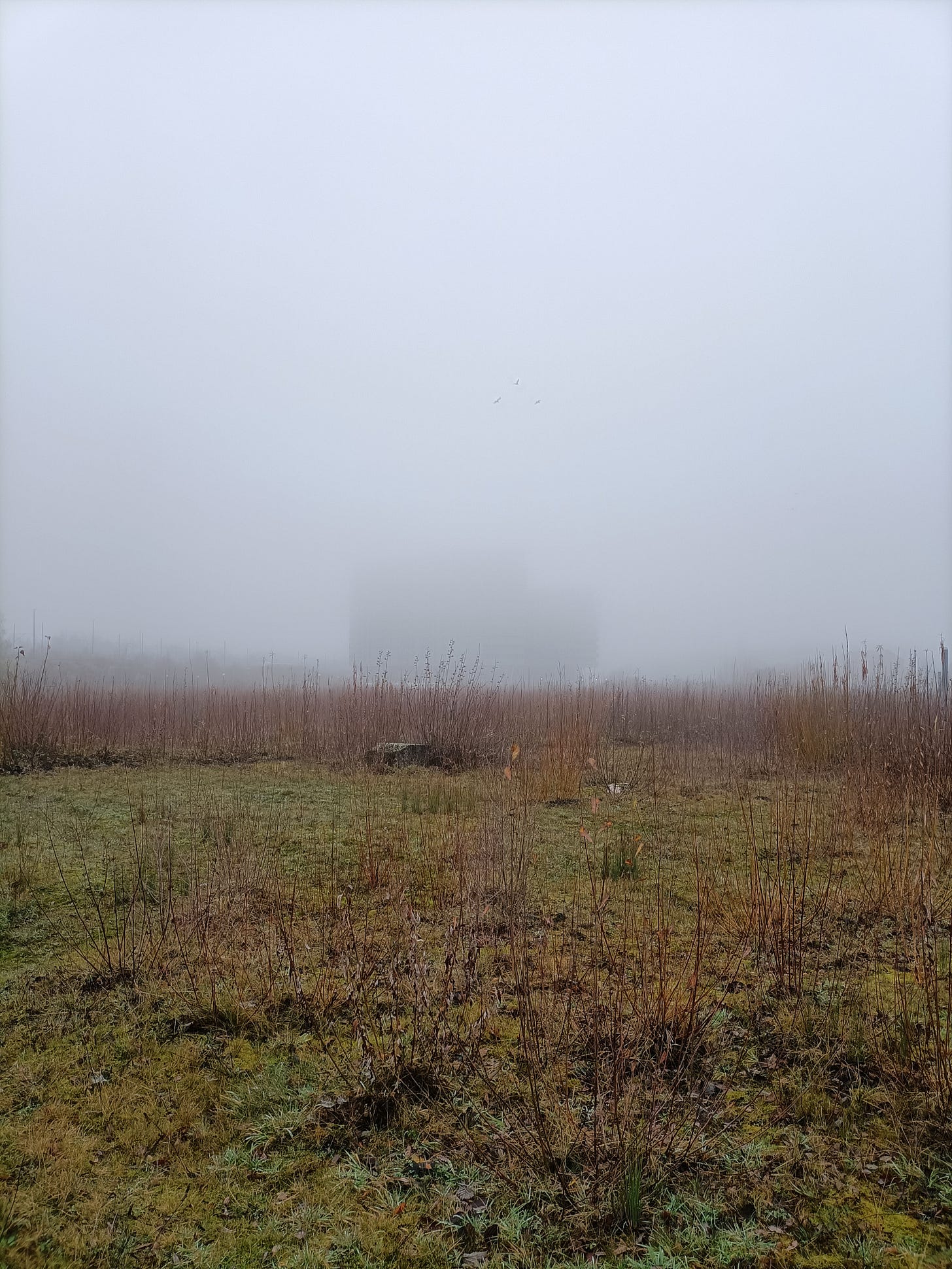
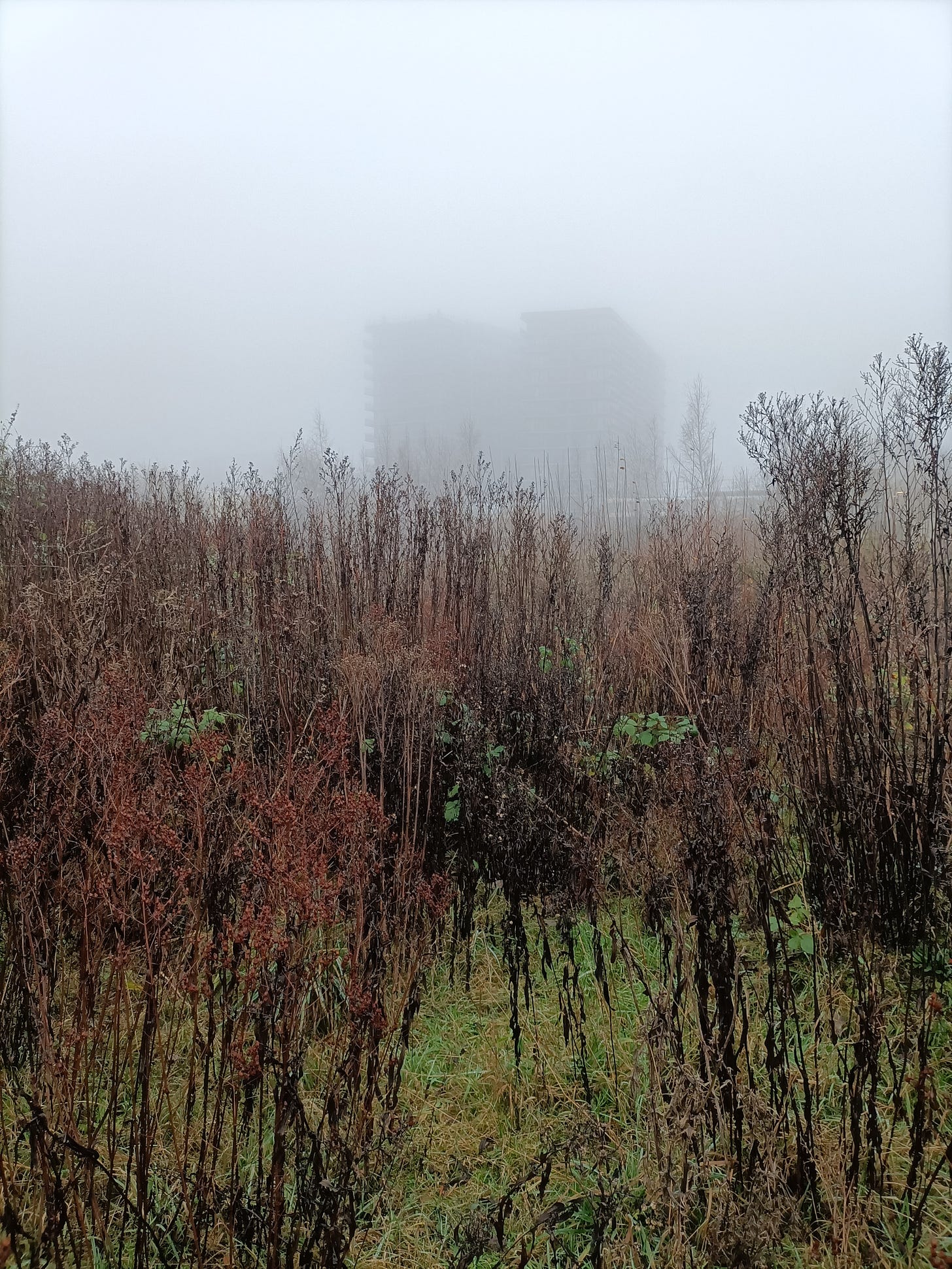
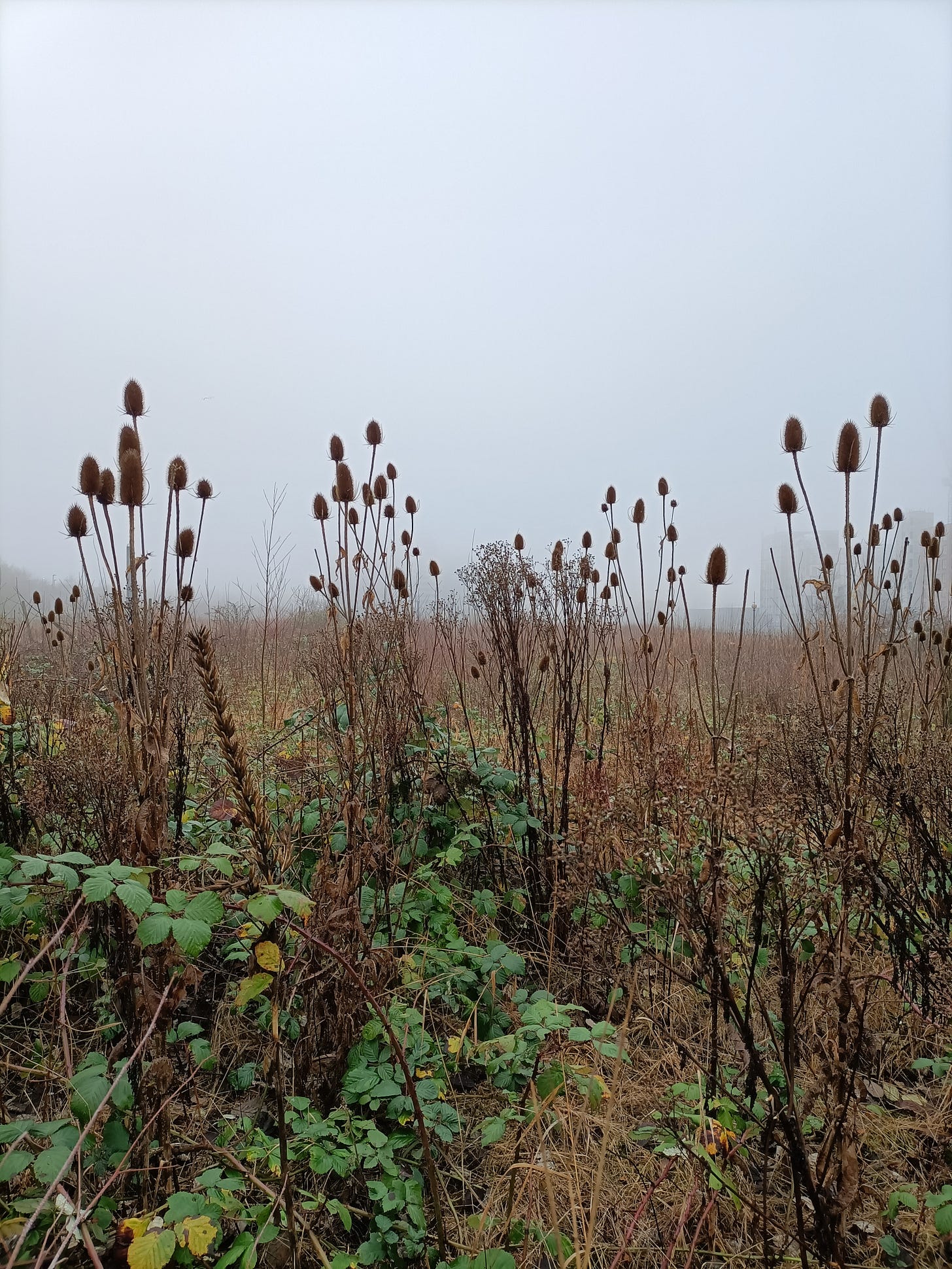

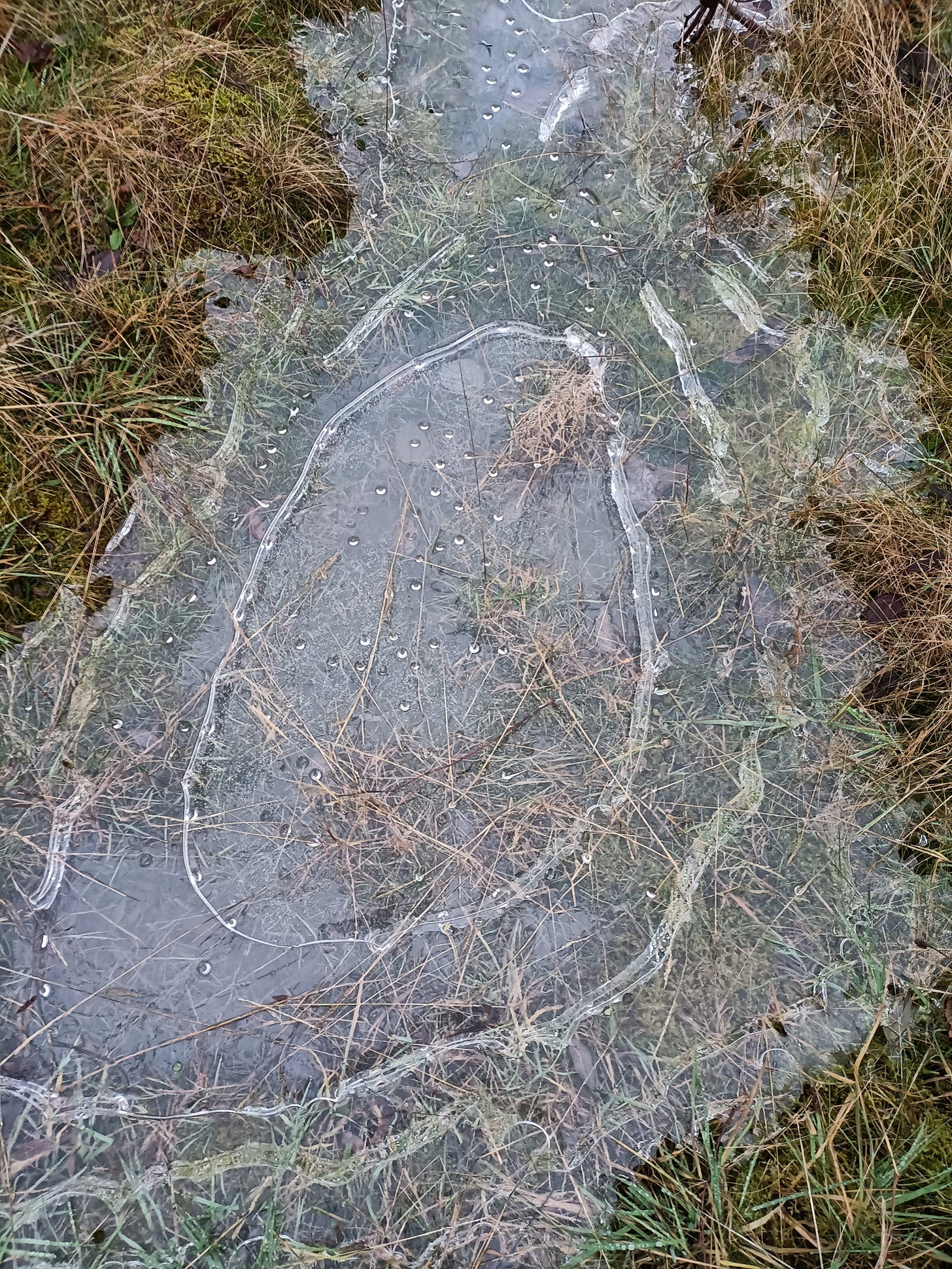
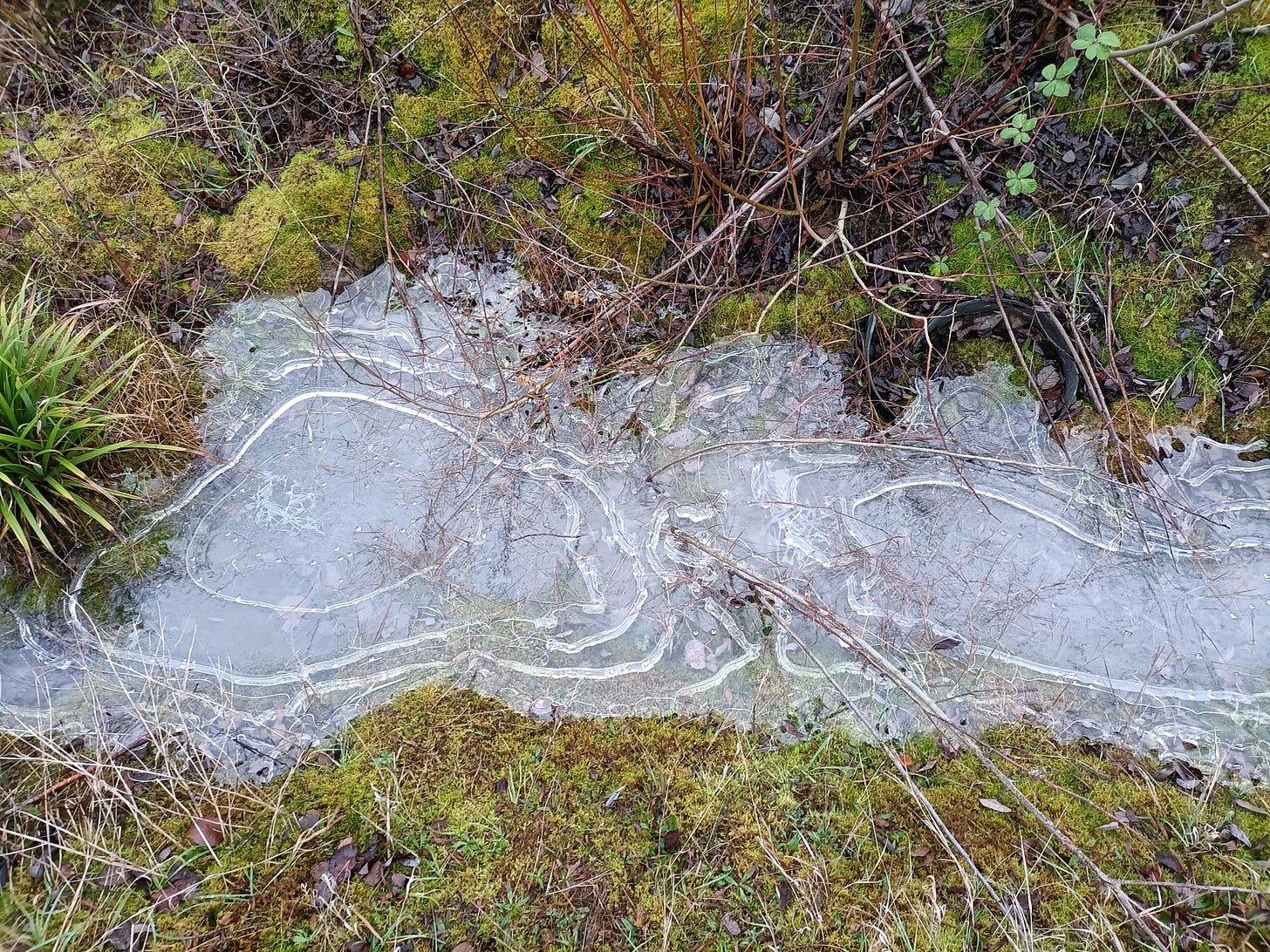
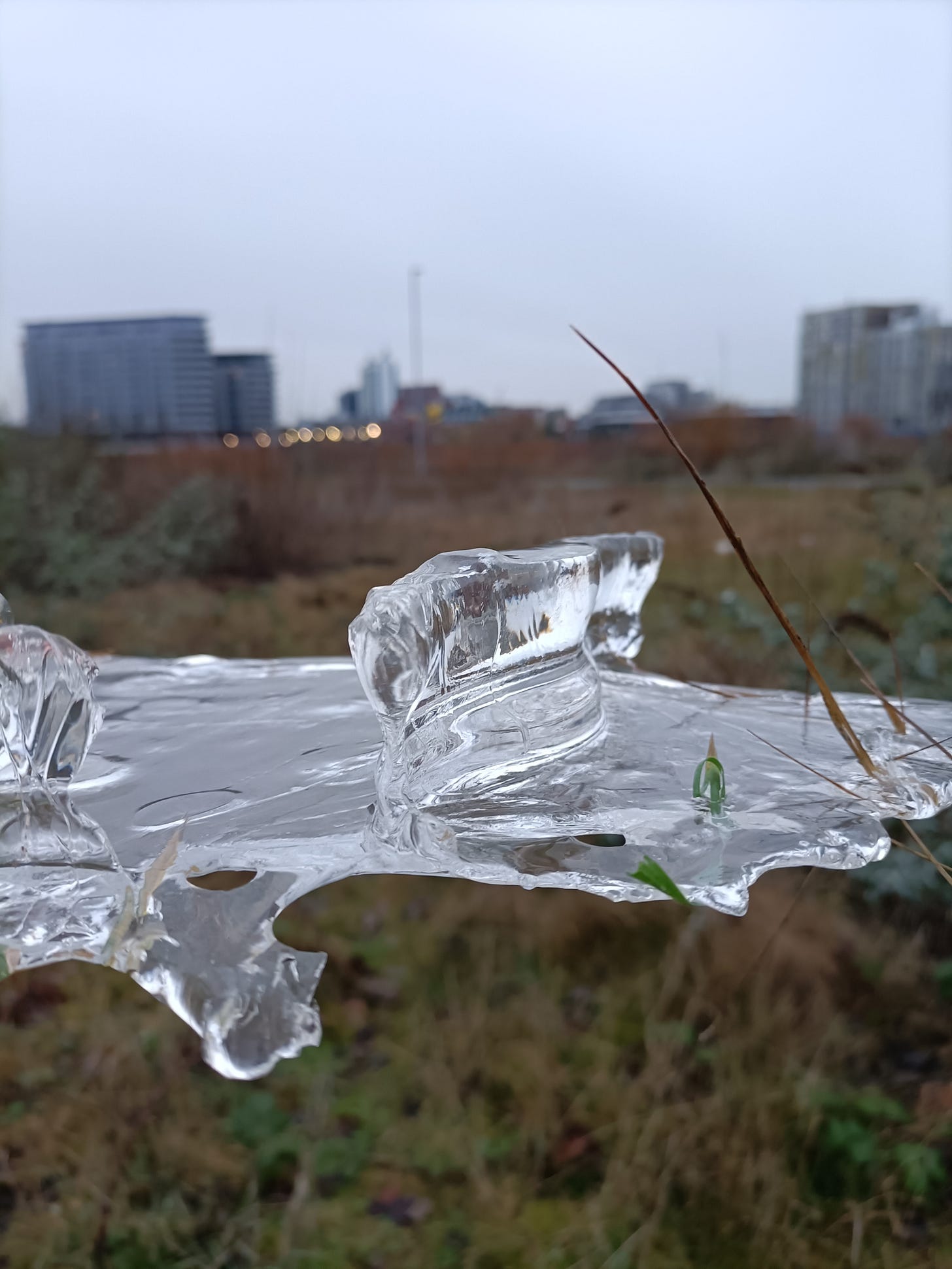


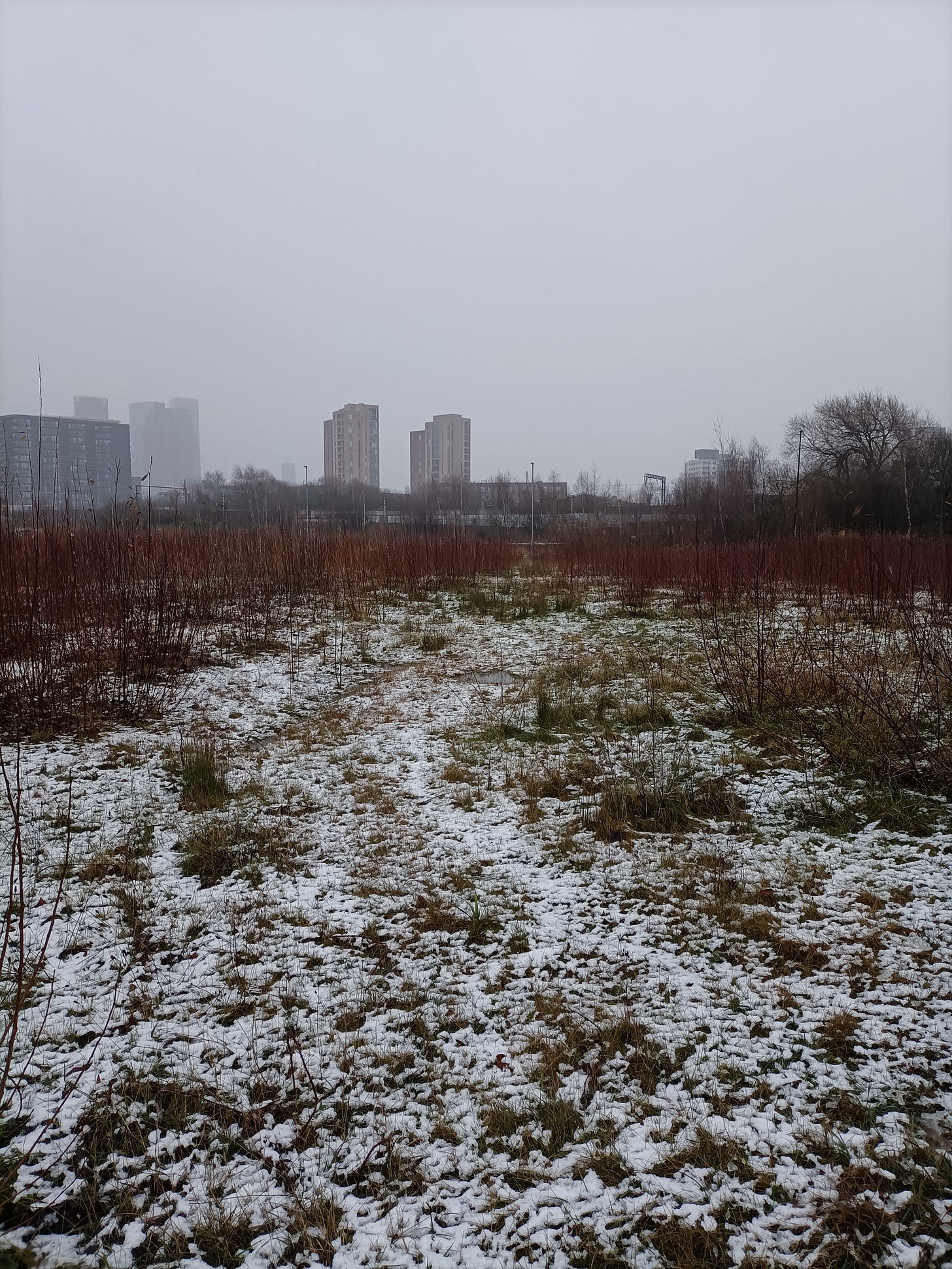
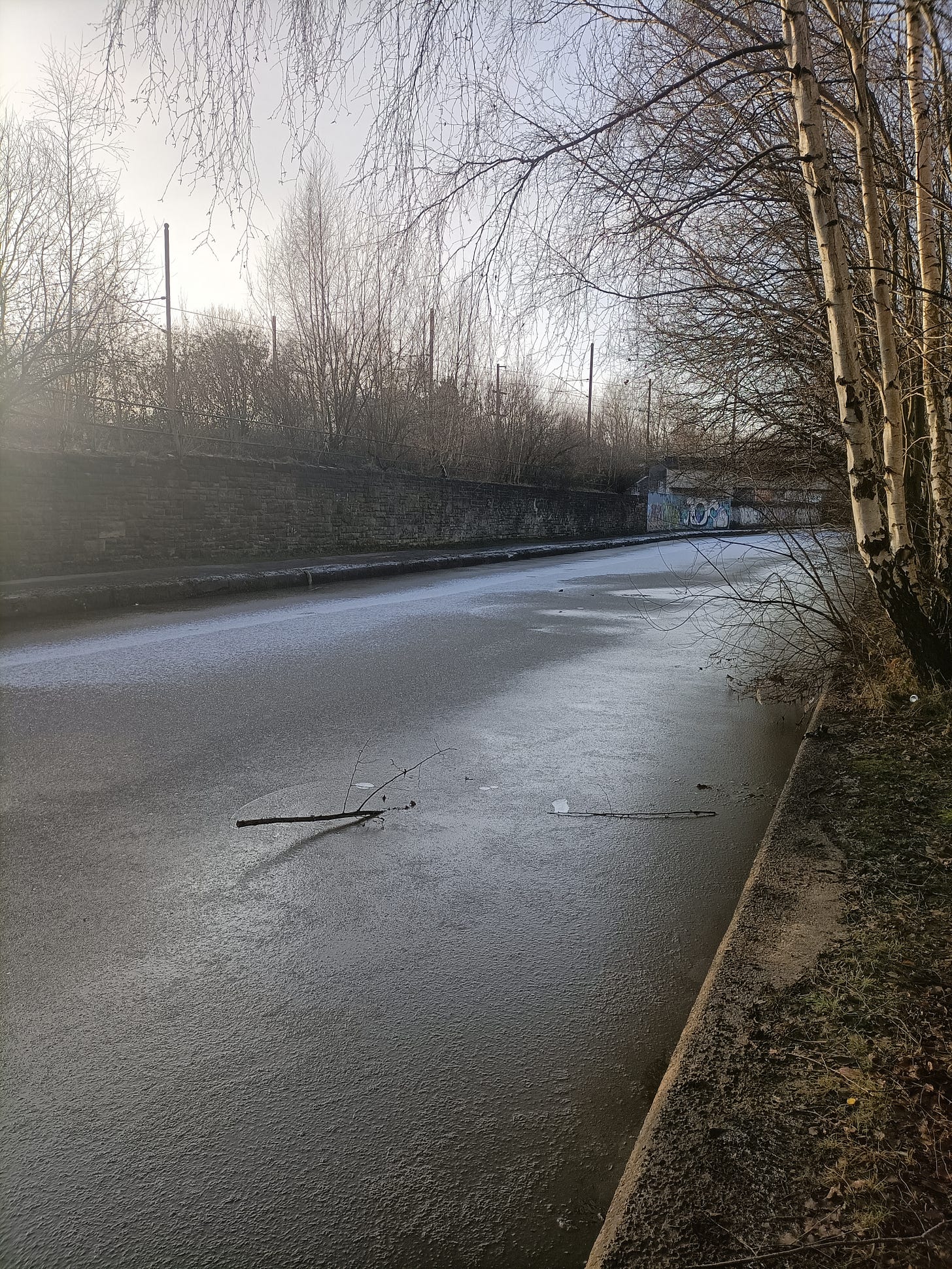
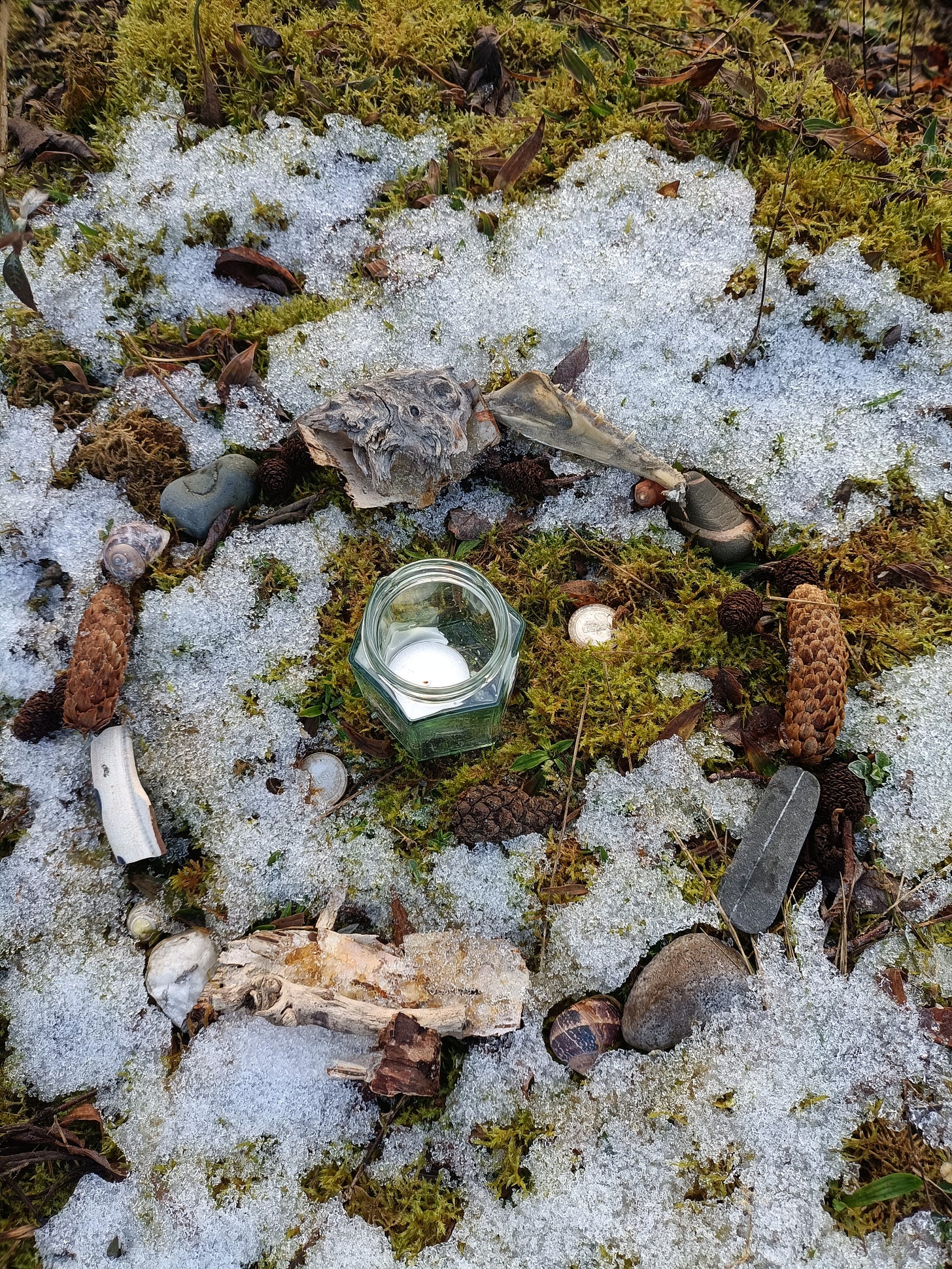

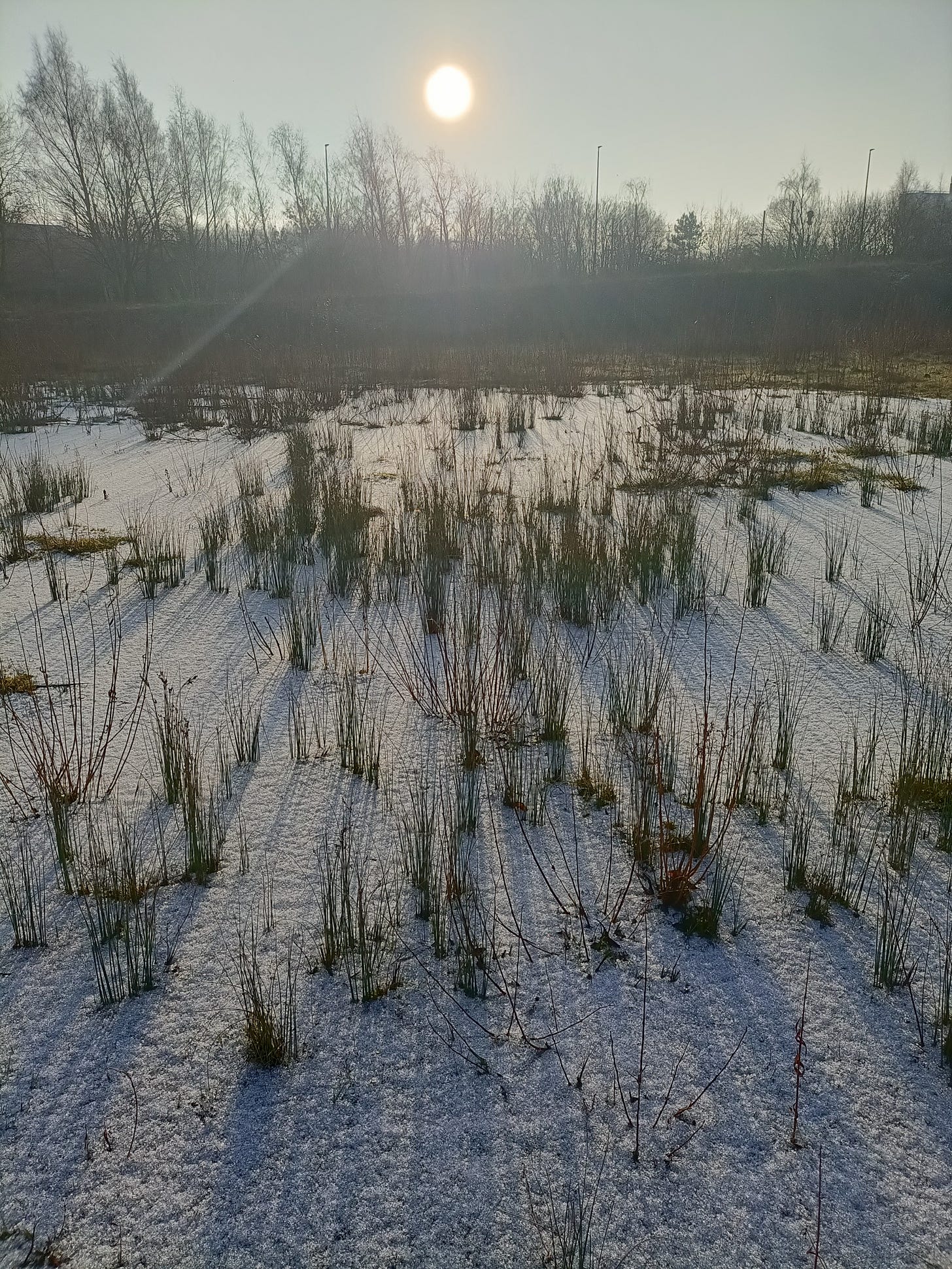

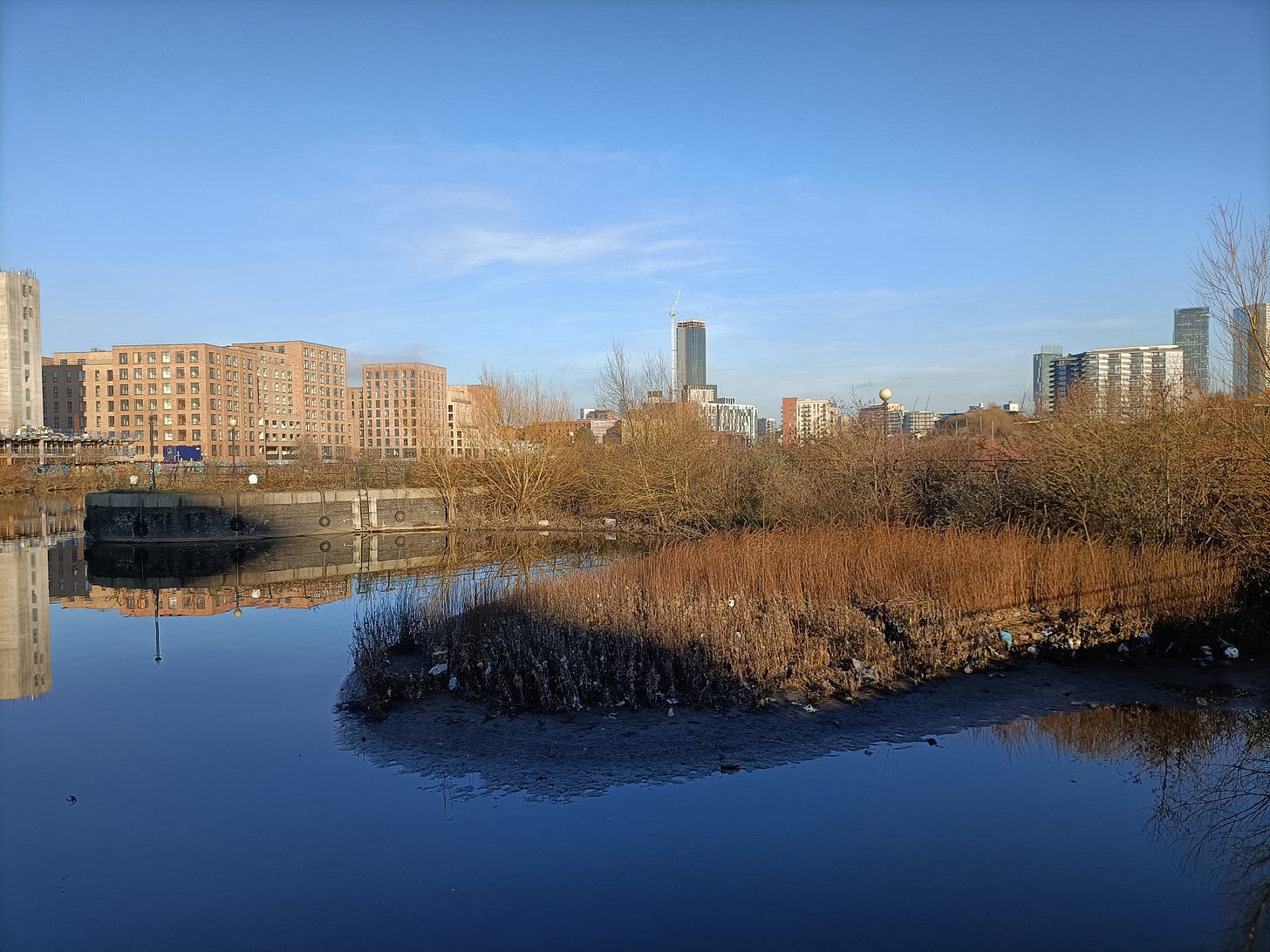
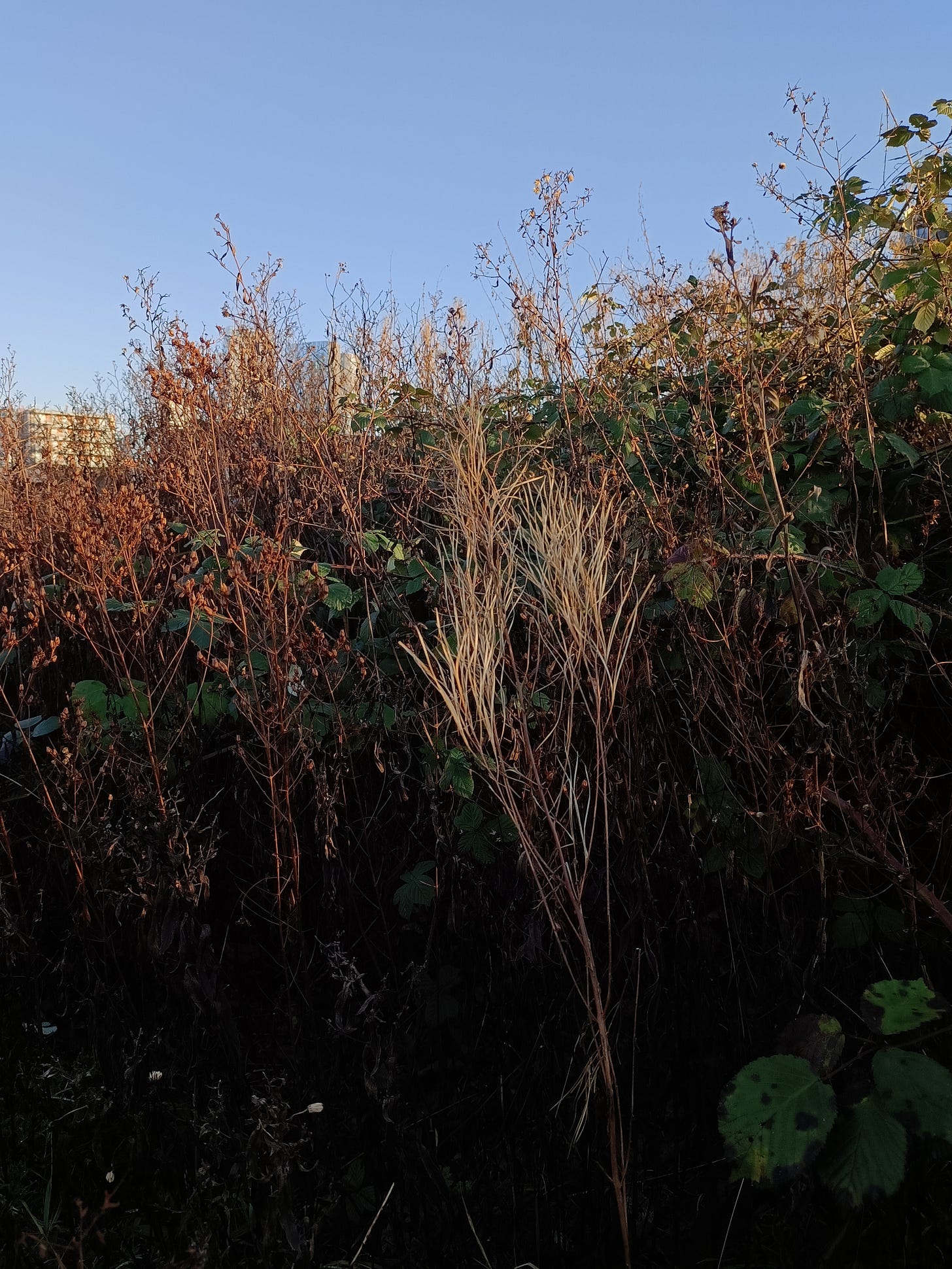
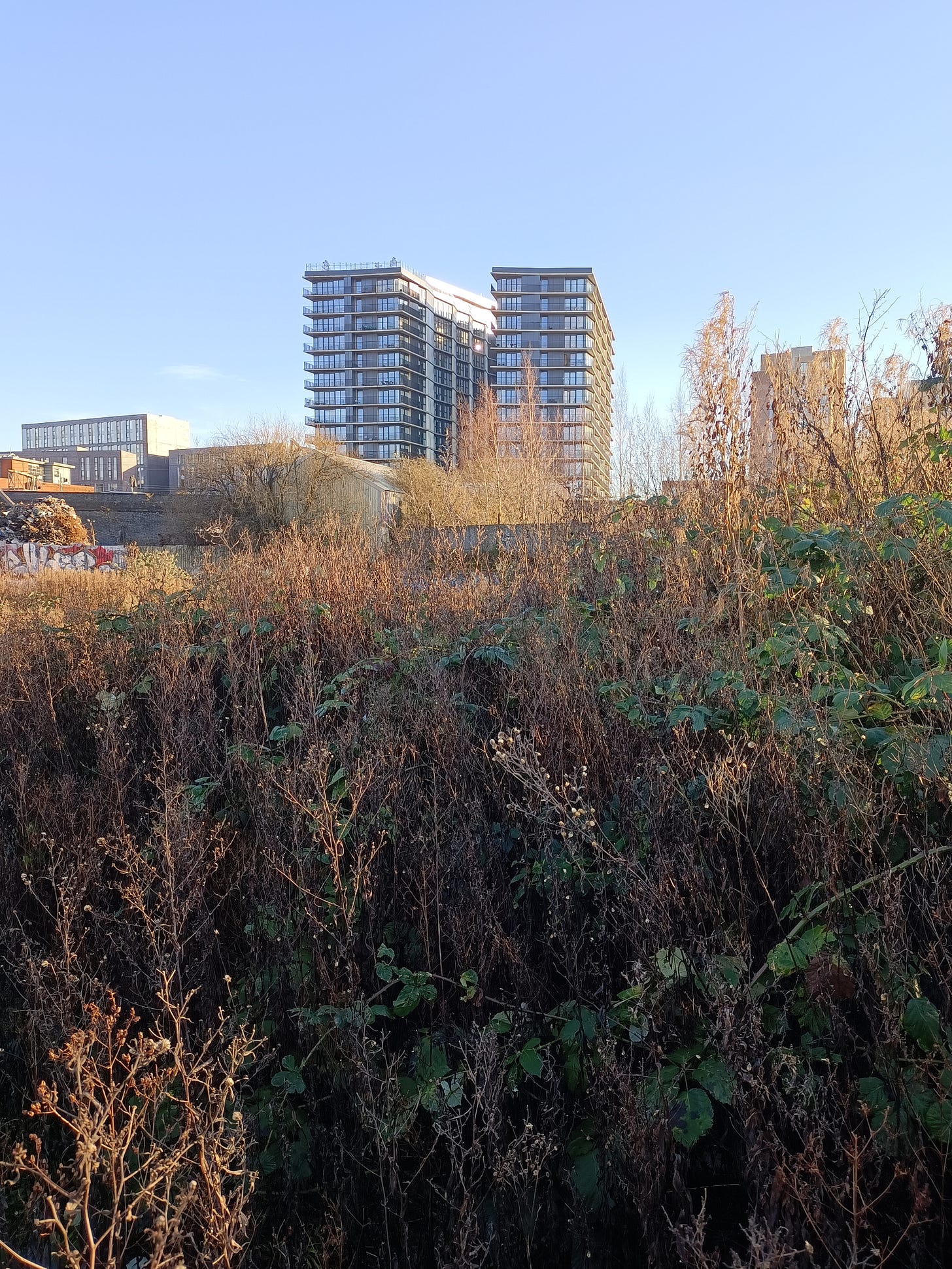
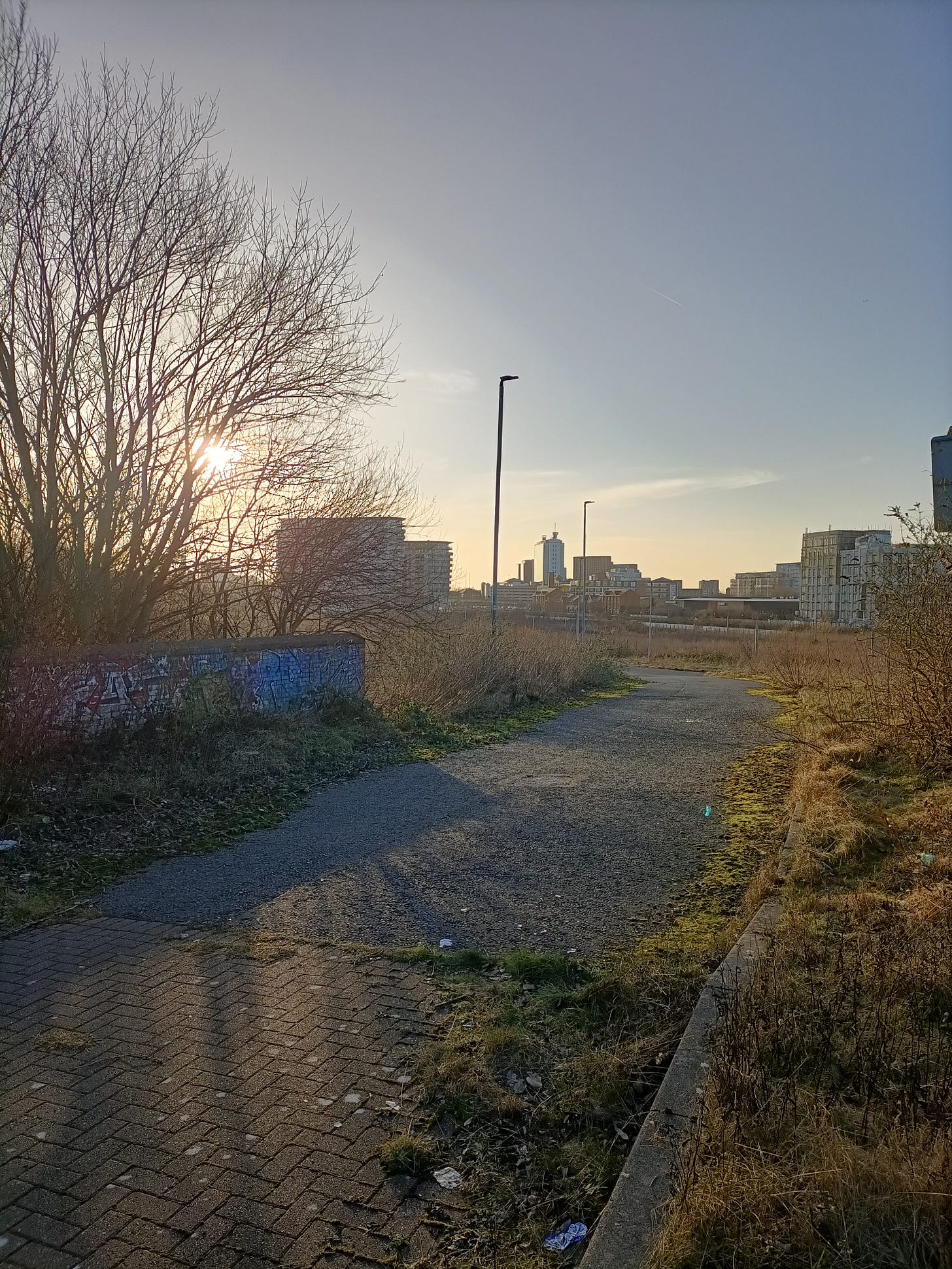
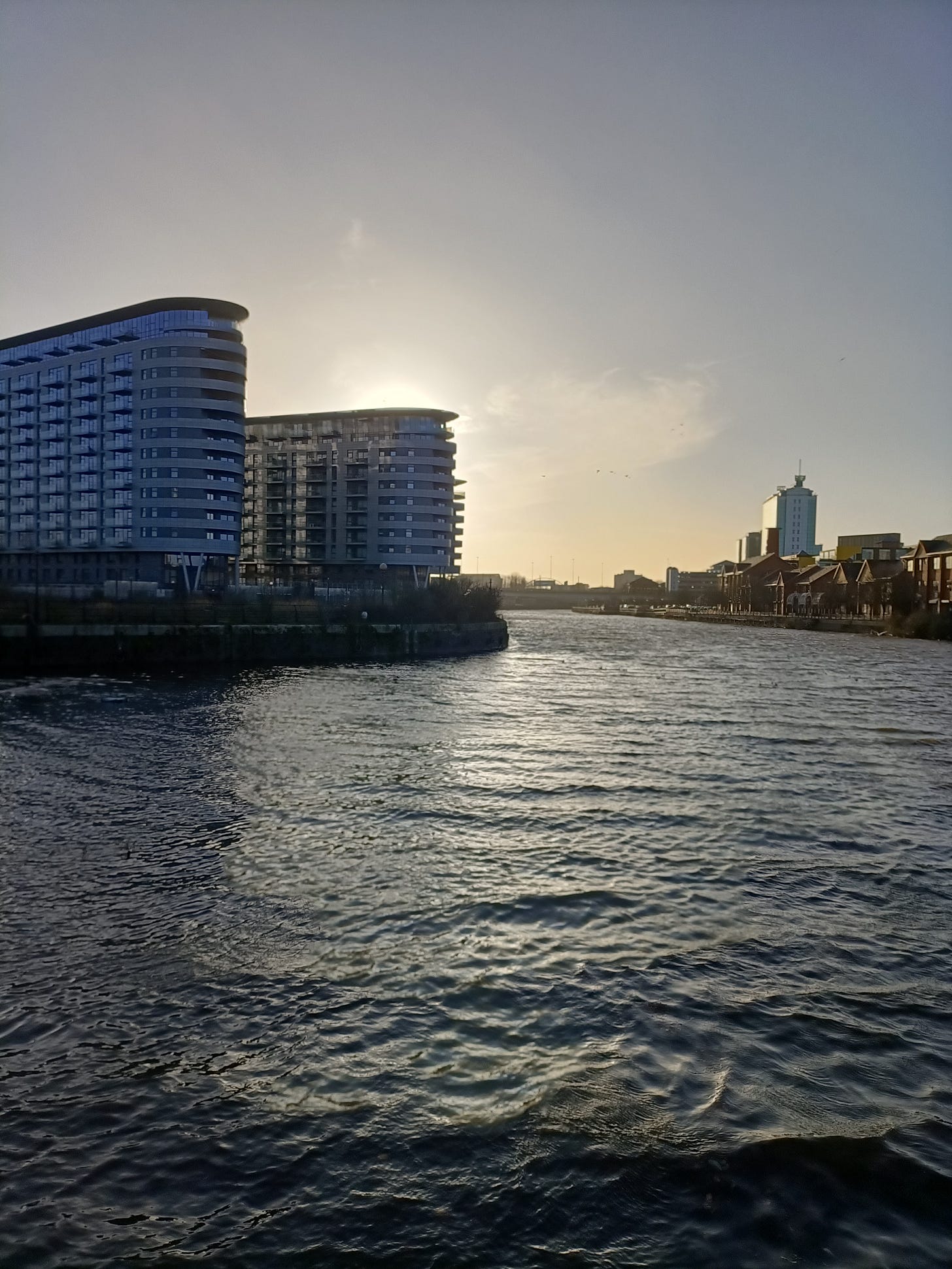
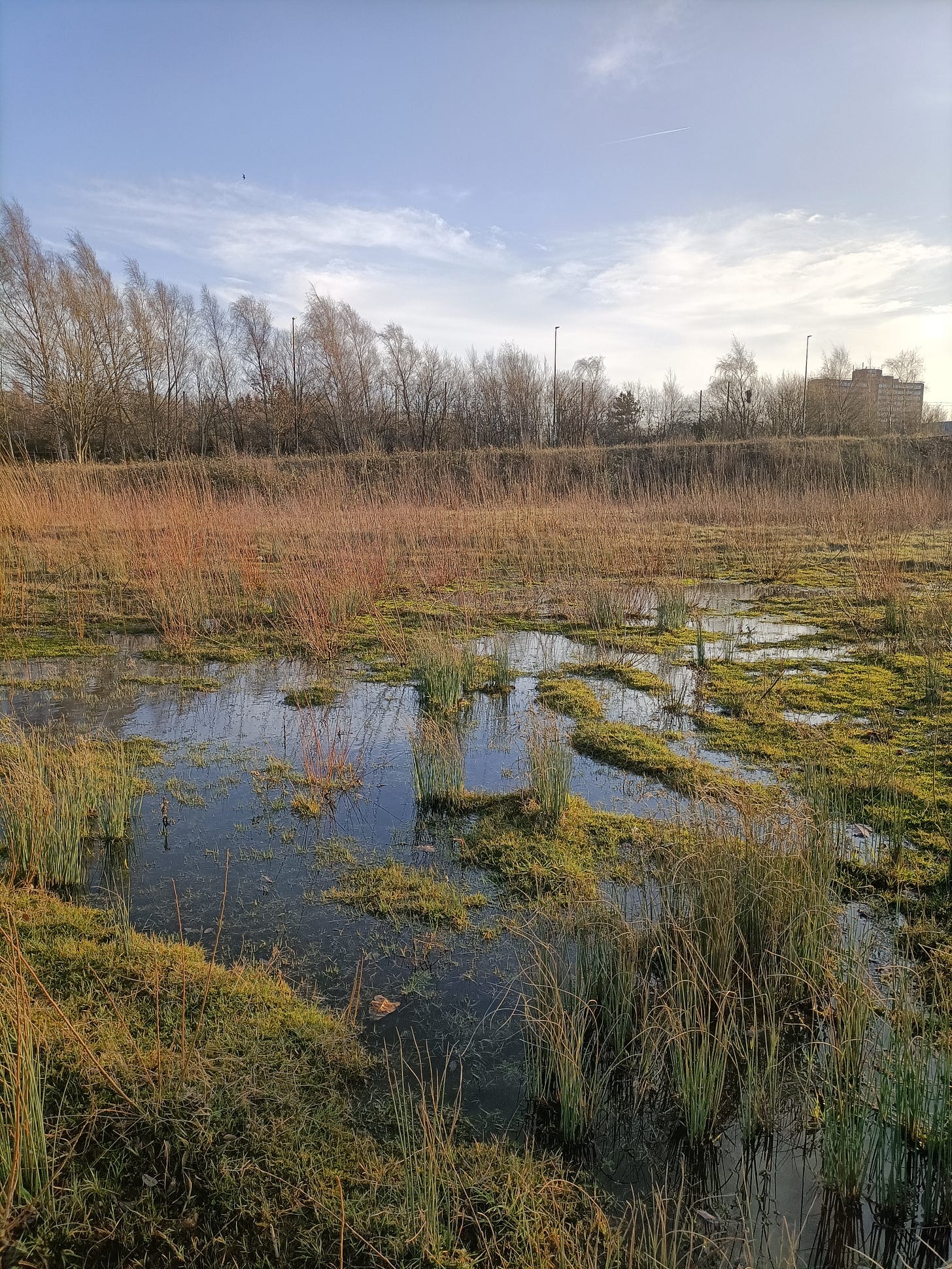
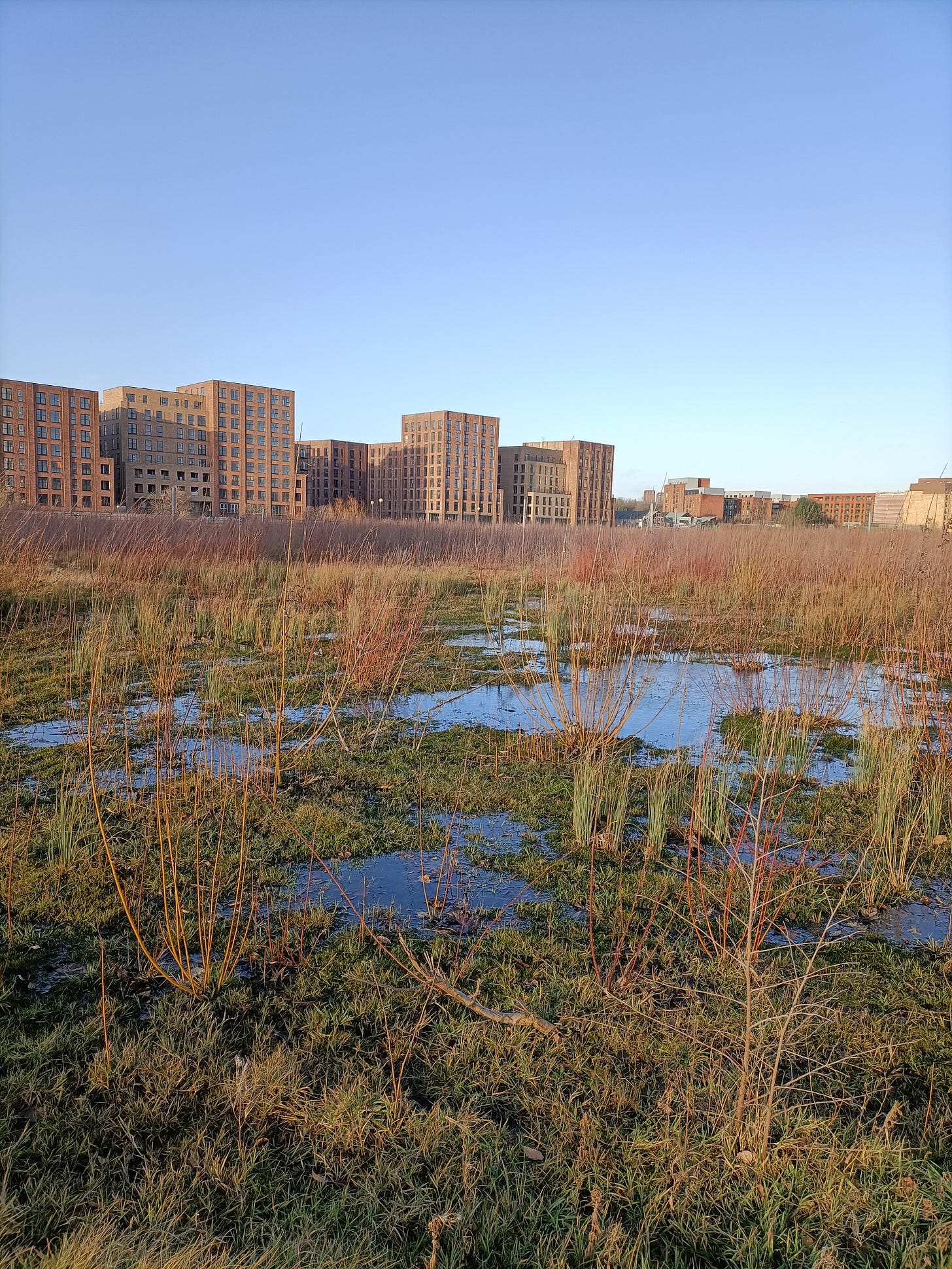










Share this post